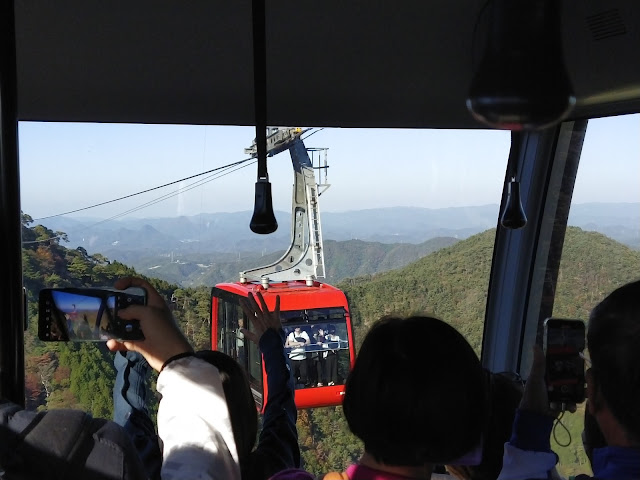This story on the ABC this Easter weekend seemingly came out of nowhere. It's on a topic we very rarely hear about: people who have persistent perception/mental health issues after the use of hallucinogenic drugs:
Sheree da Costa lost her son Joey
to suicide and believes he would still be alive if he hadn't developed
hallucinogenic persistent perception disorder (HPPD) as a teenager.
"That was the actual tipping point for Joey," she said.
HPPD results in disturbed vision, where a sufferer may constantly see visual snow, haloes or trails.
Many also experience out-of-body sensations and extreme anxiety.
It's triggered by the use of psychedelic drugs and has been described as the "trip that never ends".
With
the use of illegal drugs on the rise and the emergence of psychedelics
in the treatment of mental health disorders, there are calls for greater
awareness and more research into the condition.
Sheree said her son's experience of HPPD was "a living hell".
Joey
developed HPPD after taking a psychedelic drug at the age of 17 when he
was in his final year at school, affecting his vision.
"Where school was concerned words were starting the slide off the page
so he couldn't study, he couldn't read, and reading was something that
he was very good at," she said.
Joey dropped out of school and eventually told his parents, who tried to help as much as they could.
"But to be honest we were in the dark as well until we started to do research of our own," Sheree said.
"Even to us it seemed hopeless because, where do you go? Especially here in Australia."
Ms da Costa said she and Joey often talked about raising awareness about HPPD together.
Now she is advocating on his behalf to call for more research into the condition.
Well, yeah, I knew that some hippy LSD users going nuts and never recovering in California in the 1960's was a real thing (and led to its criminalisation - while others call it a mere "moral panic" that wasn't justified), we all know that in recent years a "pro-psychedelics" push back has been happening. Yet in this article, we have a couple of researchers (father and daughter, actually) talking about HPPD as a significant issue:
Researcher Anneliese McConnell
said HPPD was reported to affect about 5 per cent of hallucinogen users,
but she thinks the real numbers are much higher.
"It's not a small population we're talking about," Dr McConnell said.....
Much of the existing research on HPPD is focused on describing the condition.
Psychiatrist
Harry McConnell said a lot more research needed to be done into the
basic mechanisms of how it occurred, who was at risk and treatments.
He
and his daughter Anneliese McConnell — a researcher at the Western
Sydney University School of Medicine — have looked into whether HPPD is
associated with other disorders such as migraines accompanied by visual
auras or tinnitus.
"It's
difficult to get funding in this area. I think it's difficult to get
funding in a lot of areas related to drug and alcohol use and HPPD is no
exception here," he said.
It's seems that while it has been known about for a long time, it's been only gradually getting more attention:
To get some more detail on prevalence, I'll
quote a 2021 review article:
Of the various health issues caused by the steady,
worldwide increase in illicit drug use, HPPD is an underreported and
still poorly understood condition (UN Office on Drugs Crime, 2019).
Sound prevalence rates are lacking, but the DSM-5 suggests that 4.2% of
all hallucinogen users experience HPPD-like symptoms (American Psychiatric Association, 2013). In their literature study, Halpern and Pope (2003)
estimate that such symptoms emerge in <5% of all patients treated
with LSD-assisted psychotherapy but in up to 50% of polydrug users.
Sometimes two subtypes of HPPD are distinguished based on their severity
and comorbidity. Type 1 is considered to be the milder variant, where
perceptual symptoms are infrequent and barely affect general
functioning, with the experiences being predominantly denoted as
pleasant (and occasionally as “free trips”). The prognosis is said to be
good, with the course often being self-limiting and not requiring
professional help (World Health Organization, 2018).
Type-2 HPPD, however, is described as causing significant impairment in
daily and occupational functioning, while the prognosis is poor, with
symptoms lasting up to years or even decades, albeit that large-scale
follow-up studies to back this up are scarce (Noushad et al., 2015).
Although it is unknown what proportion of those
experiencing HPPD seek professional help, only a small group manages to
procure the help they need. This is at least partly due to a lack of knowledge of HPPD among general
practitioners and medical specialists. It is widely believed that
pharmacological treatment regimens and psychotherapy have little to no
effect on HPPD (Lerner et al., 2014c).
Since evidence-based treatment guidelines are still to be developed,
patients often receive practice-based interventions with off-label
medications such as adrenergic agonists, antidepressants,
antiepileptics, antipsychotics, benzodiazepines, beta blockers,
calcium-channel blockers, catechol-o-methyl transferase inhibitors, and
opioid receptor antagonists. The evidence for the effects of these
treatments is lacking since they have only been described in case
reports and open-label treatment studies.
This seems to be another case where my innate leeriness of recreational drug use finds some evidence falling into its lap, so to speak.
I also find it a bit odd that the ABC seems to be quite open to running cautionary stories about hallucinogens lately. (Is there some story commissioning producer there who has a relatively conservative attitude to illicit drug use?) I say this because don't think I ever got around to noting here this story that appeared on 7.30 in February that highlighted psychiatrists who worry that people are getting entirely the wrong impression from the TGA's decision to legalise the use of psilocybin and ecstasy under strict guidelines:
The Royal College of Psychiatrists
(RANZCP) says people may be getting the wrong impression about the
availability of some psychedelic drugs, following an historic 2023
decision to take them off the prohibited drug list.
"There's
a definite risk of patients having significantly elevated
expectations," says the chair of RANZCP's Psychedelic Steering Group,
Professor Richard Harvey.
"Some
of the marketing, what we see on the web … is suggestions that these
are treatments or substances that everybody should use, that all
psychiatrists should be prescribing — there's absolutely not, by any
means, the evidence that is the situation."...
The drugs are only available for therapeutic use in conjunction with intensive therapy carried out by authorised practitioners.
7.30 can only confirm two cases of psychedelic drug prescriptions since the TGA's decision came into effect in July last year.
Dr Cassidy says the process was complicated and expensive.
But the information in the story that most caught my eye was this:
Professor Susan Rossell from Swinburne University of Technology says there's a trend across published psilocybin studies.
"About a third seem to have some
very positive effects, a third nothing really, and a third do have some
negative long-term consequences about the so-called bad trip," she said.
Professor Rossell's team is trying to find out what are the predictors of success.
"We know this intervention is going to be really expensive, it involves a lot of therapy.
"So if we can make some predictions as to who it's going to benefit the most, wouldn't that be the best way forward?"
About a third can have negative long term consequences! We don't see that talked about much, if at all. I mean, I get that people who are going to try it are probably doing so as something of a last resort, but nonetheless, her comments indicate that there is still a very significant risk of making their problems worse. How many treatments are allowed with a risk profile that high?
Anyway, in other odd drug news this Easter, it was surprising to read that the victims of a drug overdoes on the Gold Coast were a group or women in their early 40's - not the typical age range or gender group you expect to be going on a recreational drug binder. (Well, unless they are rich and doing cocaine.) But it turns out that the woman who died was a new age eccentric:
Known as a “Shamanic medicine woman” on her social media, Whittaker
proudly worked to “build an army of courageous, empowered, soul driven
women who are here to create change and make magic”.
Her work revolved around New Age spirituality.
As to the drugs that killed her (and sent her friends to hospital too), it's not yet known for sure, but:
...early reports have referred to the substance as a "drug cocktail," including ketamine, GHB or fantasy.
And in yet more drug use news, it was widely reported that Queensland had decided to allow pill testing at a music festival for the first time. The TV news reports showed it to be a very modern hippy-ish style where the point of being there is to be off their collective faces.
I don't know - I would prefer to deal with the problem by banning festivals I don't like the look of! But I would say that, wouldn't I...






























%20Trump%20bridge%20-%20Search%20_%20X.png)
%20Trump%20bridge%20-%20Search%20_%20X.png)
%20Trump%20bridge%20-%20Search%20_%20X.png)
%20Home%20_%20X.png)




%20Mehdi%20Hasan%20(@mehdirhasan)%20_%20X.png)